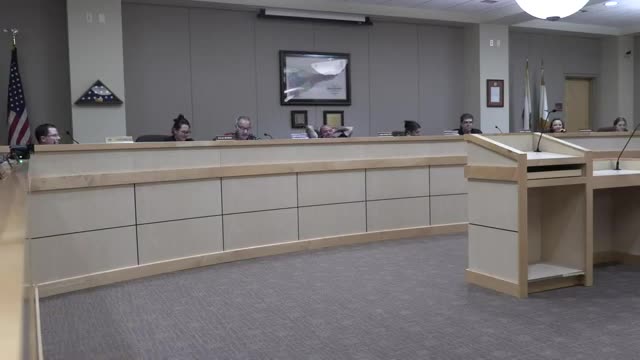Food services budget surplus sparks ambitious spending plan
November 13, 2024 | Amador County, California
This article was created by AI summarizing key points discussed. AI makes mistakes, so for full details and context, please refer to the video of the full meeting. Please report any errors so we can fix them. Report an error »

During a recent government meeting, officials discussed a comprehensive spending plan for the food services budget, highlighting a significant surplus in the cafeteria fund, which currently exceeds $3 million. The meeting featured Mr. Norton and Mr. Pingree, who provided insights into the evolution of the food service program and future plans to utilize the surplus effectively.
The discussion revealed that the district has successfully increased meal production, serving over 656,000 meals last year, a notable rise from 453,000 meals in 2015. This growth has been attributed to improved meal quality and a shift towards scratch cooking, with 40-60% of meals now prepared from fresh ingredients rather than pre-packaged options. The district has also expanded its summer feeding program, serving approximately 45,000 meals, and has taken over the after-school snack program, adding another 44,000 meals to its annual total.
Key to the surplus has been the reimbursement structure for meals served, with the district receiving between $180,000 to $215,000 monthly from state and federal programs. This financial model has allowed the district to net a profit on many meals, further contributing to the surplus.
Looking ahead, the spending plan outlines investments in kitchen infrastructure, equipment upgrades, and personnel training over the next three years. Plans include replacing outdated ovens and kitchen equipment, remodeling kitchens at several schools, and enhancing meal service quality and participation. The district aims to improve the overall dining experience for students, with a focus on increasing the number of meals served and the quality of food provided.
Additionally, the district is exploring grants for farm-to-school initiatives, which would involve students in growing produce for their meals, thereby integrating nutrition education into the curriculum. The meeting underscored a commitment to not only maintaining but also enhancing the food service program, ensuring it meets the needs of students while effectively managing the available funds.
The discussion revealed that the district has successfully increased meal production, serving over 656,000 meals last year, a notable rise from 453,000 meals in 2015. This growth has been attributed to improved meal quality and a shift towards scratch cooking, with 40-60% of meals now prepared from fresh ingredients rather than pre-packaged options. The district has also expanded its summer feeding program, serving approximately 45,000 meals, and has taken over the after-school snack program, adding another 44,000 meals to its annual total.
Key to the surplus has been the reimbursement structure for meals served, with the district receiving between $180,000 to $215,000 monthly from state and federal programs. This financial model has allowed the district to net a profit on many meals, further contributing to the surplus.
Looking ahead, the spending plan outlines investments in kitchen infrastructure, equipment upgrades, and personnel training over the next three years. Plans include replacing outdated ovens and kitchen equipment, remodeling kitchens at several schools, and enhancing meal service quality and participation. The district aims to improve the overall dining experience for students, with a focus on increasing the number of meals served and the quality of food provided.
Additionally, the district is exploring grants for farm-to-school initiatives, which would involve students in growing produce for their meals, thereby integrating nutrition education into the curriculum. The meeting underscored a commitment to not only maintaining but also enhancing the food service program, ensuring it meets the needs of students while effectively managing the available funds.
View full meeting
This article is based on a recent meeting—watch the full video and explore the complete transcript for deeper insights into the discussion.
View full meeting
